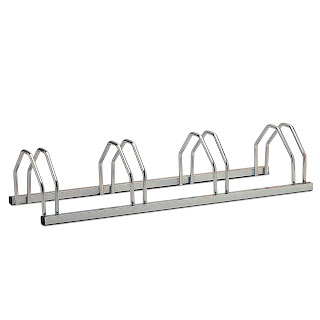Comprehensive Guide to Bicycle Parking
Introduction to Bicycle Parking: Enhancing Urban Mobility
Bicycle parking plays a crucial role in promoting cycling as a sustainable mode of transportation and supporting active, healthy lifestyles. Well-designed bicycle parking facilities encourage more people to choose cycling by offering convenient, secure, and accessible places to store their bikes. In this comprehensive guide, we’ll explore the core principles and advanced concepts of bicycle parking, covering everything from design basics to the latest industry trends.
Key Elements of Bicycle Parking Design
Types of Bicycle Parking
Bicycle parking solutions vary widely, ranging from simple bike racks to more complex systems such as bike lockers, shelters, and corrals. Each option offers different levels of security, weather protection, and space efficiency, catering to diverse user needs and environments.
- Bike Racks: Ideal for short-term parking, providing quick access and minimal security.
- Bike Lockers: Offer high security for long-term parking, protecting bikes from theft and vandalism.
- Bike Shelters: Provide some weather protection while allowing for easy access and visibility.
- Bike Corrals: Efficient use of space in high-traffic areas, accommodating multiple bikes while enhancing security.
Spacing and Layout
Proper spacing and layout are critical for usability. Ensure there is enough room between racks or lockers for easy access and maneuverability. Clear signage and markings not only enhance the user experience but also optimize space, making it easy for cyclists to find parking quickly.
Security Features
Security is a top priority for cyclists. Implementing features such as sturdy locks, CCTV surveillance, effective lighting, and positioning bicycle parking in busy areas can deter theft and vandalism, significantly boosting user confidence.
Infrastructure Requirements and Installation Tips
Location Selection
Strategically place bicycle parking in convenient, visible, and accessible locations. Factors to consider include proximity to popular destinations, existing infrastructure, and cyclist preferences. Maximizing usage requires a thoughtful approach to location selection.
Accessibility
Ensure that bicycle parking is accessible to all cyclists, including those with adaptive or non-standard bikes. This includes providing ramps, clear pathways, and easy-to-understand signage to promote inclusivity and ease of use for everyone.
Installation Guidelines
Follow industry standards for installing bicycle parking, ensuring proper spacing, secure anchoring, and alignment with surrounding infrastructure. Collaborating with experienced professionals during the installation process guarantees durability, safety, and optimal functionality.
Best Practices for Bicycle Parking Management
Maintenance Protocols
Regular maintenance is key to keeping bicycle parking safe and functional. Address issues like damaged racks, graffiti, and debris promptly to maintain high standards and user satisfaction. A well-maintained facility encourages ongoing use and fosters a positive perception of cycling.
User Education
Educate cyclists on proper parking etiquette, including how to secure their bikes correctly and avoid blocking pathways. Utilize signage, online resources, and outreach programs to promote responsible behavior and enhance overall user experience.
Data Collection and Analysis
Utilize tools like bicycle counters and surveys to understand usage patterns, assess demand, and guide future planning. Analyzing trends in cycling can help adapt and improve parking infrastructure over time, ensuring it meets evolving community needs.
Emerging Trends and Innovations
Technology Integration
Incorporate technology into bicycle parking solutions, such as smart racks with electronic locks, bike-sharing stations, and mobile apps for reserving parking spots. These innovations enhance the user experience and support sustainable transport options.
Multi-Modal Integration
Design bicycle parking that seamlessly integrates with other transportation modes like public transit, ride-sharing, and micro-mobility options. Creating intermodal hubs with amenities for cyclists improves overall urban mobility and encourages cycling as a viable transport option.
Sustainable Design
Adopt eco-friendly practices in bicycle parking design, utilizing recycled materials, green infrastructure, and solar-powered features. Sustainable design not only benefits the environment but also aligns with broader green transportation goals, appealing to environmentally conscious users.
Conclusion
Bicycle parking is a vital component of sustainable urban transportation, promoting cycling, reducing carbon emissions, and improving public health. By focusing on effective design, infrastructure requirements, best practices, and embracing emerging trends, communities can create bike-friendly environments that enhance urban living and mobility for everyone.
To learn more about enhancing your bicycle parking solutions, visit www.aremcobarriers.co.uk or contact our Sales Team at sales@aremcobarriers.co.uk. We're here to help you create a more bike-friendly community!



Comments
Post a Comment